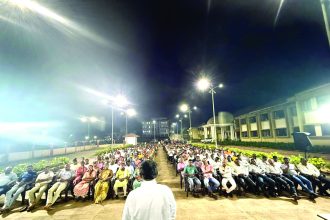Staff Reporter
Panaji
Power supply in Goa is on par with advanced states and overall better than the all-India scenario, with the state’s average hours of power supply pegged at 23.9 hours in urban areas and 23.8 hours in rural areas during 2023-24, according to the Union Ministry of Power.
The ministry on Monday said that Goa is on par with Maharashtra in providing uninterrupted power supply to residential, industrial, and commercial consumers. Moreover, the state’s average hours of power supply are higher than the national average, which was 23.4 hours in urban and 21.9 hours in rural areas in 2023-24.
Only Delhi, Kerala, Tamil Nadu, and Telangana provide 24-hour power supply in the country, as per the ministry, which said that Goa is not among the states that witnessed power shortages in February this year.
The ministry said that Goa has been sanctioned a total of Rs 716 crore under the Revamped Distribution Sector Scheme (RDSS) to help utilities achieve the objective of providing quality and reliable power supply. Of this, Rs 469 crore is for installing smart meters, and Rs 247 crore is for reducing transmission loss.
The gross budgetary support to the state under the two sections, however, is Rs 243 crore, comprising
Rs 95 crore for smart metering and Rs 148 crore for reducing distribution loss, the ministry divulged.
Minister of State for Power Shripad Naik, replying to a question raised by Sadanand Shet Tanavade, said that there is adequate availability of power in the country, and in times of shortage, states can procure power from surplus states.
He said that electricity supply and distribution is a state matter, and state commissions are at liberty to specify lower hours of supply for some categories of consumers, such as agriculture. “The Centre supplements the efforts of the state in enhancing the hours of power supply through schemes like Deen Dayal Upadhyaya Gram Jyoti Yojana, Integrated Power Development Scheme, Pradhan Mantri Sahaj Bijli Har Ghar Yojana, and RDSS,” said Naik.
Under these schemes, new transformers are distributed, feeders are set up, and high/low tension lines are installed.




